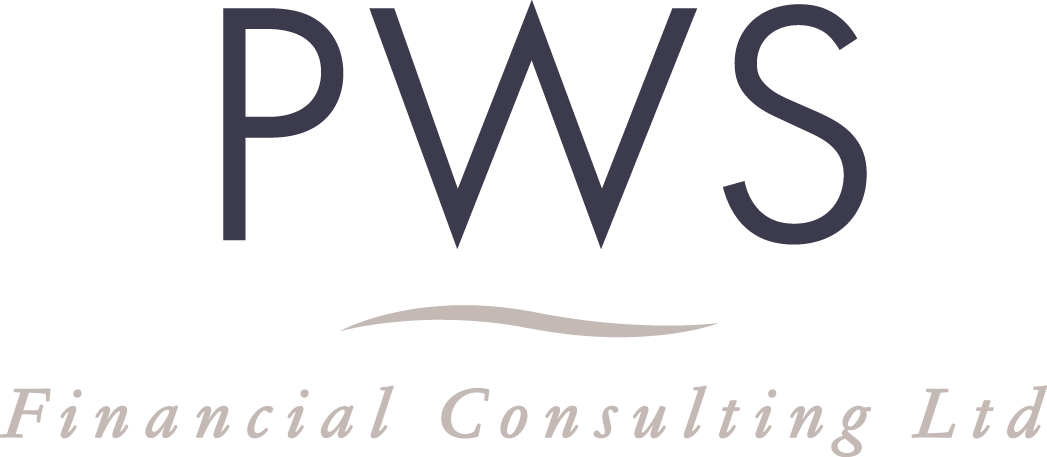All registered pension schemes can (in theory at least) invest in property, including land, either in the UK or overseas.
Pension schemes can invest directly in commercial property, but many choose to invest indirectly using pooled vehicles. These include unit trusts, open-ended investment companies (OEICs) or real estate investment trusts (REITs). As well as allowing smaller funds to invest in the property sector, pooled vehicles allow diversified investment. This should eliminate the risks of investing in a single property.
There are various controls over pension scheme property investments that restrict some schemes’ options. These focus on areas such as:
-
property transactions with connected parties
-
occupational pension scheme investments in employer-related property
-
SIPP and SSAS investments in residential property (Which is heavily taxed if done personally)
Of course, pension scheme trustees and product providers may limit the investment options available under some pension schemes or products, especially for overseas investments where specialist knowledge may be needed, and other regulatory requirements may apply.
Pension commercial property investment – perceived advantages and disadvantages
Business owners looking to buy commercial property for use by their business can have the following ways in which they can buy it:
-
through the company
-
as individuals or
-
via a pension scheme (typically a SSAS or SIPP)
In many cases, there may be an obvious answer to this potential dilemma. It may be that one or more of the options may not be feasible. However, where the decision is less obvious, careful consideration needs to be given to each of the options available.
Below are some of the perceived advantages and disadvantages of buying commercial property via a pension scheme, or jointly by some pension schemes.
Advantages
-
There is an initial cost saving as contributions to the scheme to help finance the purchase generally attract tax relief.
-
Rent received by the scheme is free from income tax.
-
Rent paid by the company is an allowable expense for corporation tax purposes.
-
As the property is owned by the scheme, it is separate from the company/individual, so there will be no enforced sale of the property by creditors if the company/individual goes into liquidation/becomes bankrupt.
-
There is no capital gains tax payable if the property is subsequently sold.
-
Improvement in the company cashflow as the funds that would be required for the company to buy the property can be used for other business purposes.
-
Similarly, if the company already own the property and sell it to the scheme, it will get a cash injection.
-
On the member’s death there normally will not be an inheritance tax liability as the property is an asset of the scheme (although there are exceptions).
-
The property can be held in a pension scheme indefinitely, provided there is enough liquidity to pay any possible income requirements.
-
The pension scheme is responsible for the maintenance of the property.
-
Joint property purchase is possible so for example, two or more SIPPs could jointly own property.
Disadvantages
-
It could be difficult to pay benefits on death or retirement if the property cannot be easily sold.
-
The company must pay rent at the market rate.
-
Potential lack of diversification depending on the size of the scheme and the value of the property.
-
If the company need to borrow, the property cannot be used as a security as it is owned by the pension scheme.
-
Borrowing could be more restricted under the pension scheme as the maximum the scheme can borrow is 50% of the net scheme assets.
-
Investment returns could suffer if the company goes into liquidation and a new tenant cannot be found.
Pension property investment – costs
Some or all of the following costs may be incurred if a pension scheme invests directly in property:
-
Surveyors’ fees
-
Solicitors’ fees
-
Searches
-
Stamp duty land tax – unless the value of the property is within the nil per cent band
-
VAT – if the property is less than three years old or has been opted into the tax by the vendor
-
The scheme provider’s charges
-
Property management charges
-
Mortgage arrangement fees
These costs should all be paid by the pension scheme to avoid additional tax charges. It is therefore important that there are sufficient funds over and above the purchase price held within the pension scheme.
Pension property investment – taxation
Any individual, or company, selling a property to a pension scheme is subject to tax on any gain in the usual way. Similarly, the pension scheme must pay the usual stamp duty land tax on any property it buys.
However, once a pension scheme owns a property, it is held in a very tax-advantaged environment. In particular:
-
rental income from the property is free from income tax and
-
capital gains on the property are free from capital gains tax
Where a company rents property from a pension scheme, the rent paid is a business expense that can normally be deducted from profits before they are assessed for tax. This means that rent paid by a company to its own pension scheme is treated in much the same way as pension contributions as far as tax relief goes.
Pension property investment – member age considerations
Pension schemes can invest in property regardless of the age profile of the scheme membership.
However, as a property is not a liquid asset, it can be difficult to sell a property investment quickly to pay retirement or death benefits when they fall due. This liquidity risk must be borne in mind where pension property investments are concerned.
-
For large pension schemes, with property investment as part of a diversified portfolio and large numbers of members with a spread of ages, the liquidity risk is less of an issue.
-
For smaller pension schemes, such as SIPPs and SSASs, the liquidity risk of investing significant proportions of the pension fund in property is much higher. As members approach an age where mortality becomes a significant issue, or funds may be needed to buy an annuity, the liquidity position should be monitored closely.
Having said this, if the scheme has the options of phased retirement and/or income drawdown, it is easier to manage this risk. Under income drawdown, rental income from the property could be used to pay pensions.
Connected party property transactions
Pension schemes can buy, sell, or lease most kinds of assets directly to or from scheme members or other connected parties.
However, HMRC expects any property transaction between a registered pension scheme and a connected party to take place on normal commercial terms at the market rate that would apply to an arm’s length transaction. If this is not the case, the difference between the market rate and the amount actually paid will be taxed as an unauthorised payment.
Joint property ownership
In theory, a pension scheme can own a property jointly with any other party, such as other pension arrangements, individuals, or companies, even where they are connected.
In practice, however, joint purchases can create additional complications and costs. For example, conflicts of interest can arise if one party wants to sell the property when it does not suit the other joint owner. As a result, many providers only allow joint purchase between the same types of scheme with the same provider (for example, joint ownership by two SIPP arrangements under the same master trust).
If a joint purchase takes place, each party is entitled to a percentage share of the property, based on their contribution towards the purchase price and related costs. Each party should subsequently receive any rental income in proportion to their percentage share of the property. Similarly, any costs relating to the property should be due in the same proportions.
Occupational pension scheme investments in employer-related property
Occupational pension scheme property (or land) investments leased to the sponsoring employer or associated companies (or parties connected with them) are regarded as employer-related investments.
Occupational pension schemes cannot invest more than 5% of their assets in employer-related investments unless:
-
the scheme has less than 12 members
-
all members are trustees of the scheme and
-
the scheme rules need all members to agree in writing before any employer-related investment is made
In practice, this effectively means that the only occupational pension schemes able to meet the above rules and make significant employer-related property investments are SSASs.
This restriction does not apply to SIPPs, as they are not occupational pension schemes.
Pension investments in residential property
Residential property quite simply means any property that is or could be lived in. It also means the garden, or grounds, of the property (and any building on this land related to the property, such as a garage or other outbuilding).
This means that, as well as traditional houses or flats, residential property includes buildings such as:
-
holiday homes (including beach huts)
-
timeshare accommodation (or rights to such accommodation)
-
converted commercial buildings (these will be treated as being residential when the conversion work has reached the stage where the building can be lived in – namely the issuing of the Habitation Certificate)
If a property is not currently in use, it will be classified as commercial or residential based on the purpose it was last used for.
If a property has never been used, it will be classified as commercial if it is to be used for commercial purposes. This is even if it could have been lived in. Of course, any new building intended to be lived in will be classified as residential property.
SIPP and SSAS
SIPPs and SSASs cannot invest directly into residential property as HMRC’s rules treat direct investments by investment-regulated pension schemes in residential property as investments in taxable property, which is subject to heavy tax charges. However, there are some exceptions.
Residential property held by a scheme before 6 April 2006 can, subject to certain conditions, continue to be held without attracting tax charges.
SIPPs and SSASs can invest indirectly in residential property without tax charges, using pooled vehicles such as property unit trusts, open-ended investment companies (OEICs) or real estate investment trusts (REITs), but only if the investment is made via a genuinely diverse commercial vehicle that meets HMRC rules.
Exemptions from taxable property residential property definition
There are exemptions which mean that some kinds of property that would normally be regarded as residential are not treated as residential property for the purposes of the taxable property rules. These exemptions cover buildings such as:
-
hotels (and hotels rooms) – unless the member has a right to use it
-
institutional homes providing care for children, the elderly or those with disabilities or mental health, or drug or alcohol dependency problems
-
student halls of residence (but not houses, or flats, let to students)
-
hospitals or hospices
-
prisons or other detention centres
Similar exemptions apply to some kinds of work-related residential property. To qualify for these exemptions, the person living in the property:
-
must either be required to live there as a condition of their employment or
-
be using it in connection with the use of business premises owned by the investment-regulated pension scheme
and
-
must not be a member or connected to a member (and, if living there as a condition of employment, must not be connected to the employer)
For example, this exemption could apply to:
-
a caretaker’s flat in a factory or office block or
-
a flat above a shop that is used by the shop manager.
Residential parts of buildings
Where a building is split into different parts, the way the building is treated under the taxable property rules depends on the nature of the building and the way it is divided. The basic rule is that if a property (or part of it) is suitable, or mainly used, for living in then it will be treated as residential property.
It is easiest to show how this works by looking at some examples:
-
A shop with a flat above it will be treated as two separate properties if they have separate access and are not interconnected. In this case, only the flat will be treated as residential property. However, shop premises which contain an internal, or interconnected, flat or bed-sitting room will be treated as a single residential property.
-
A house which has had the main reception rooms converted for use as a veterinary surgery will be treated as residential property because it is a single property and it could be lived in.
-
A garage next to a house will be treated as residential property because its primary use is to provide parking facilities in connection with the residency of the house. However, a barn next to a farmhouse is likely to be treated as commercial property because it is primarily intended for use in connection with the farming of the land rather than the residential occupation of the farmhouse.
Of course, an investment-regulated pension scheme could still buy some of the above “residential” properties if they qualify for the exemptions for work-related residential property.
The decision about whether parts of buildings are treated as being residential under the taxable property rules follows the principles HMRC use to work out whether an individual qualifies for capital gains tax private residence relief. Guidance on this is set out in HMRC’s Capital Gains Tax Manual.
Pension borrowing – the rules
Pension schemes most commonly borrow to buy a property but, legislatively speaking, any registered pension scheme can borrow for any legitimate purpose intended to benefit the scheme. For example, a pension scheme could borrow to:
-
buy a new investment
-
improve an existing asset or
-
manage an unexpected need for liquidity (for example, to pay a lump sum death benefit promptly where the scheme holds illiquid assets).
However, in practice, product providers and pension trustees limit the investment options available under some pension schemes or products. So borrowing is only likely to be available under more specialist pension schemes, like SIPP or SSAS, and they may restrict when schemes can borrow and what it can be used for.
Borrowing – permitted lenders
Pension schemes can borrow from anyone. But if a scheme borrows from a connected party (such as a member) it must be on normal commercial terms or the transactions could be treated as value-shifting transactions, resulting in unauthorised payment tax charges.
Borrowing – security
There is no legislative requirement for borrowing to be secured. But, in practice, most lenders will insist on borrowing being secured against the pension scheme assets.
Borrowing limit
The maximum amount a pension scheme can borrow is an aggregate amount of 50% of the scheme’s net fund value at the borrowing date.
Scheme assets should be valued on a market value basis, with deductions for any existing liabilities (such as existing borrowing). Both crystallised and uncrystallised funds are included. The capital value of a scheme pension payable is 20 x the annual pension payable.
The limit is based on the net fund value immediately before the borrowing is taken. It does not have to be re-tested if the fund value drops after the borrowing has been taken.
Note that, because new borrowing is based on the net asset position, any existing borrowing will affect the amount of new borrowing allowed.
Pension borrowing – penalties for breaking the rules
If the borrowing rules are broken, it normally results in tax charges. Broadly speaking, there are two sets of circumstances where tax charges can arise:
-
New borrowing is taken which breaks the 50% limit; or
-
Borrowing is taken from a connected party on non-commercial terms.
Non-commercial borrowing from a connected party
If borrowing is taken from a connected party on non-commercial terms, it is treated as a value shifting transaction.
-
Where a pension scheme is considered to be subsidising a connected party, the amount of subsidy involved will be treated as an unauthorised payment from the pension scheme under the value shifting rules. For example, if a scheme pays too much interest, the difference between the interest charged and the market rate of interest is treated as an unauthorised payment.
-
Similarly, where a connected party is considered to be subsidising a pension scheme, for example by providing interest-free borrowing, the amount of the subsidy is treated as an unauthorised payment under the value shifting rules.
Making (or being deemed to have made) unauthorised payments can result in significant tax charges.
If you want to know more, please feel free to book in a free no-obligation chat here.
Any reference to legislation and tax is based on our understanding of United Kingdom law and HM Revenue & Customs practice at the date of production. These may be subject to change in the future. Tax rates and reliefs may be altered. The value of tax reliefs to the investor depends on their financial circumstances. No guarantees are given regarding the effectiveness of any arrangements entered into based on these comments.





